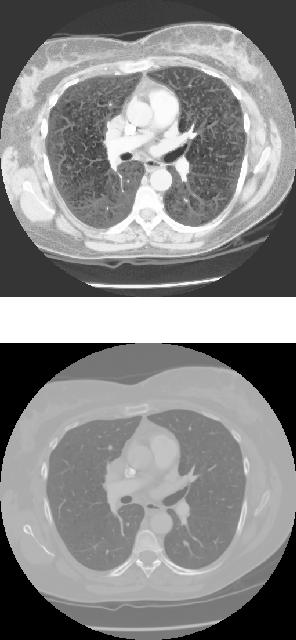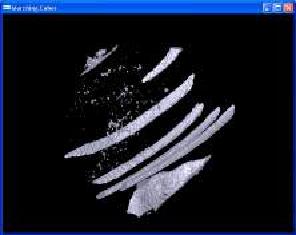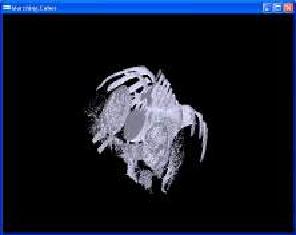
Figure 1: Triangulated Cubes
4.2. Multiple Cubes
When applying the algorithm to multiple cubes, the same approach is taken for each individual cube as described in the previous section. Looping through the cube space, one cube at a time, triangles are calculated for each. However, it is important to note that the relationship between cubes is that every cube shares 4 vertices with each cube adjacent to it [4]. This can be seen in Figure 2 where the vertices 0, 1, 2, and 3 touch both cubes.
Figure 2: Adjacent marching cubes with connected isosurface
In this way, cubes are connected to each other because their vertices are overlapped. This ensures that calculating one cube at a time will result in the creation of the same surface regardless of the order in which cubes are traversed. In Figure 2, this concept can be seen taking shape as the two surfaces in each cube are connected at their shared face.
In order to view different structures within slices, one changes the isovalue parameter of the algorithm. This effectively tells the algorithm to create polygons out of a different range of pixel values. For example, if a tumor clearly appears in slices with sharp contrast between itself and normal tissue, one can visualize the tumor by changing the range of isovalues to match the gray levels of the tumor. Or if it is important to view a broken rib, one can set the isovalues to that specific range. Therefore changing the isovalue allows whoever is analyzing the data to choose which structure they want to see.
5. Implementation
Our implementation of Marching Cubes takes in slices as uncompressed
5.1. DICOM to Bitmap Converter
Matlab has functions to read DICOM files included in the Image Processing Toolbox. We created a script that reads in a folder full of DICOM files, converts them to intensity images, performs histogram equalization, and outputs


